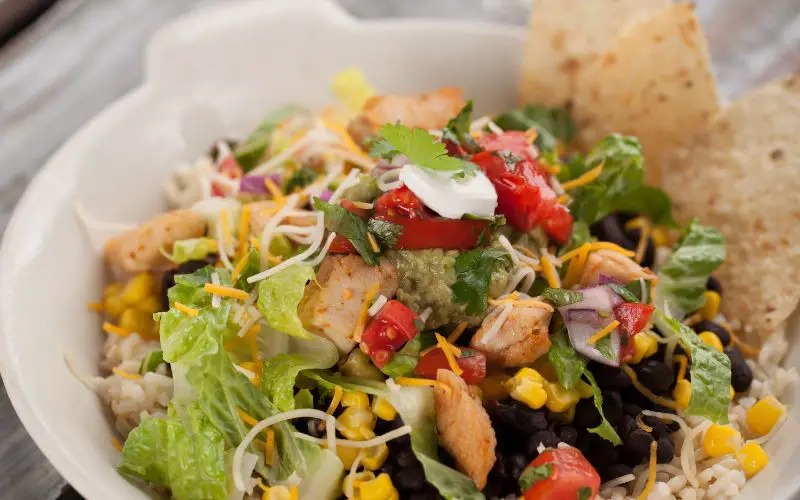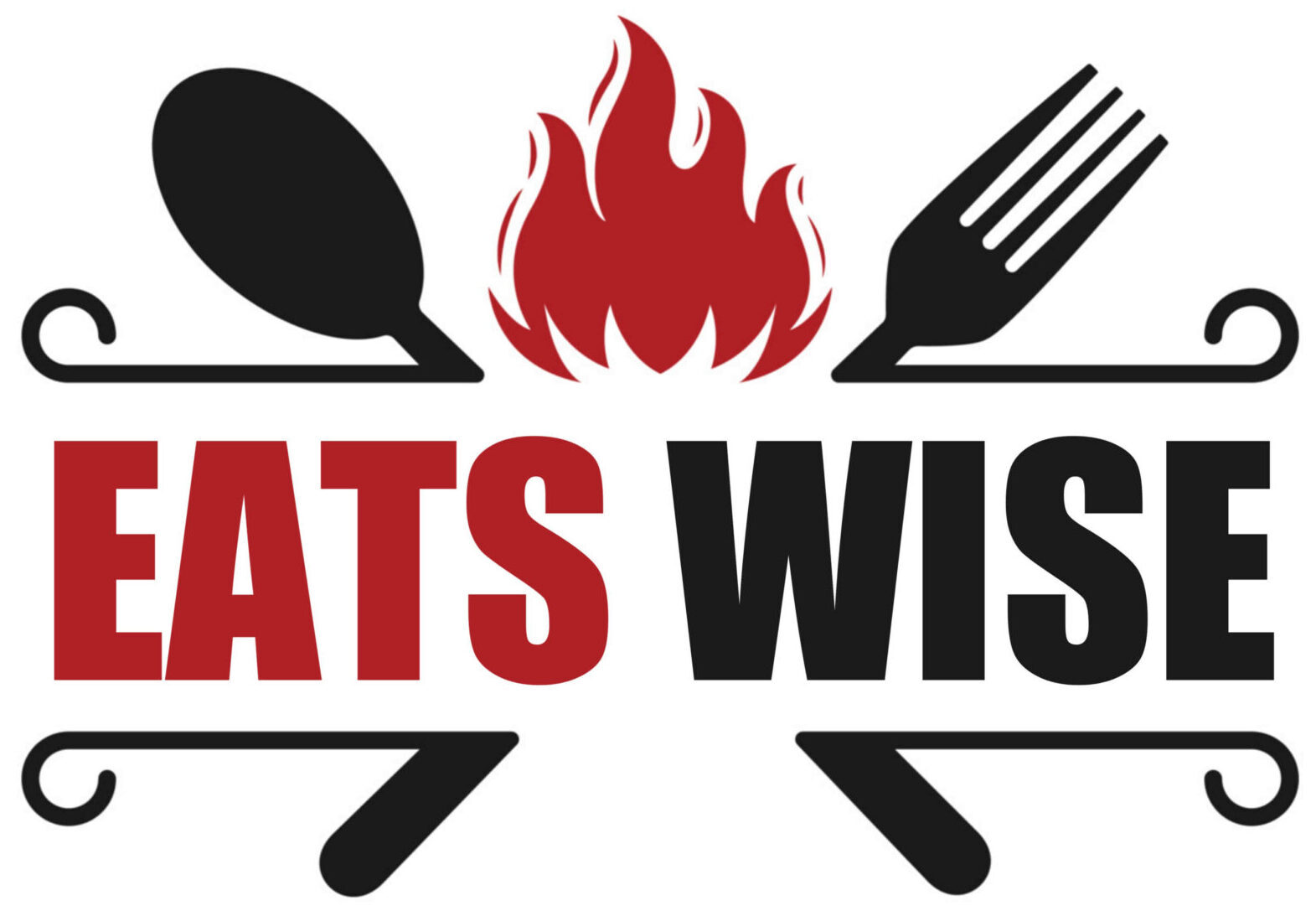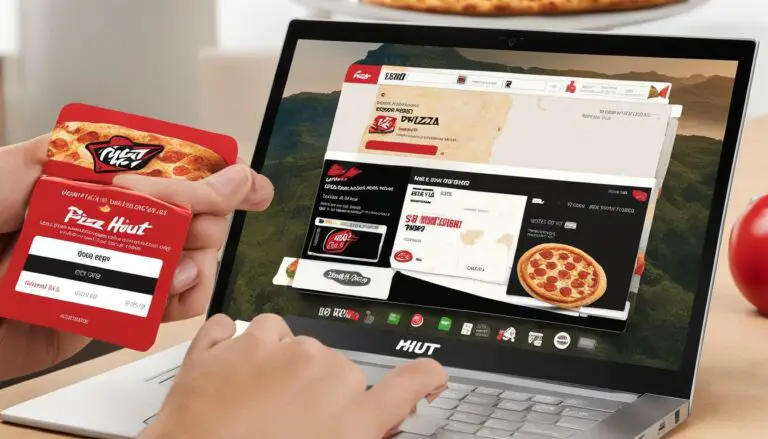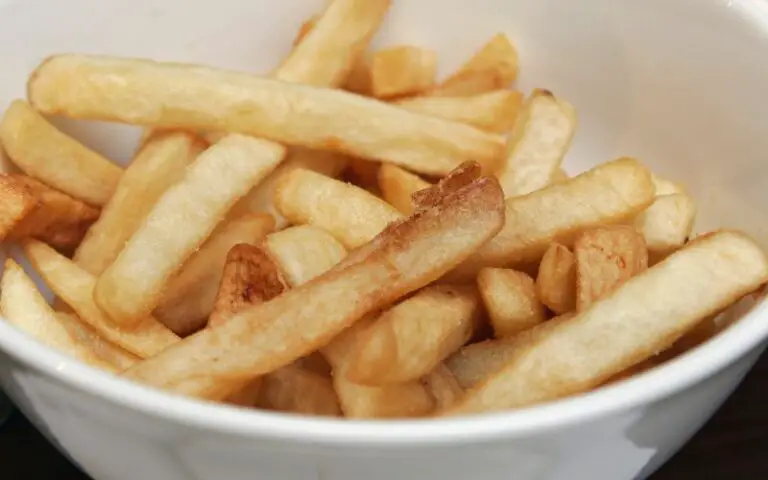Are Chipotle Bowls Compostable? The Truth!
Last updated on September 11th, 2023 at 02:14 pm
Compostable packaging has been instrumental in reducing landfills and keeping the environment safe since it became popularized in restaurants and other businesses.
Consequently, people genuinely concerned about the environment’s safety have become conscious of whether the companies they patronize use compostable packs.
If you’re a devoted environmentalist wondering whether Chipotle bowls are compostable and safe for the environment, you’ll get the right answers here.
Chipotle bowls are intentionally crafted to be compostable when they’re disposed of. Therefore, you don’t have to worry about causing any danger to the environment. All the food packaging used by Chipotle is compostable, such as burrito bowls, bags, quesadilla trays, and napkins. They previously had some non-biodegradable chemicals in their packaging, but this has been rectified since 2020.
In this article, I’ll explain if Chipotle bowls are compostable and the safety of the materials they’re made from.
By the end, you’ll know if Chipotle cutlery is compostable and whether Chipotle is an environmentally friendly restaurant chain.
Can You Compost Chipotle Bowls?

Chipotle bowls are made from safe, compostable materials that make them environmentally friendly.
You’ll never have to worry about littering the environment and causing an increase in waste products when you purchase from any Chipotle restaurant.
The process of decomposition that Chipotle’s food packages undergo includes a process that prevents the release of greenhouse gases into the atmosphere.
The above point proves that Chipotle bowls are not just safe for serving food, but they are also ideal for the environment.
Some advantages accompany choosing compostable food packaging.
Here are some pros in the case of Chipotle:
#1. Compostable Food Packaging Preserves the Environment
Generally, compostable food packaging is an amazing and efficient addition to the efforts put in place to preserve the environment.
Compostable food packaging is easier to get rid of as long as it is disposed of in the right bins assigned to it.
Some may argue that recycling is more sustainable for the environment than recycling because no physical waste is left behind.
Compostable food packaging is also made from easily perishable materials such as bamboo, sugarcane bagasse, and plant fiber.
The above choices of materials make it easy for compostable materials to return to the soil as nutrients when disposed of.
#2. Compostable Food Packaging Gives a Positive Business Image
The introduction of comfortable food packaging was primarily a means for businesses to show their customers how much they prioritize consumers’ health and the environment.
It’s important for your customers and intending customers to know that you’re a friend of the environment despite the high costs of developing compostable packaging.
Additionally, when a business tries to prioritize other aspects of environmental safety alongside compostable packaging, it makes them more endearing to consumers.
For example, Chipotle’s exploits with prioritizing environmental sustainability in every way possible have helped them gather many loyal customers.
Aside from attracting and keeping customers, comparable packaging also encourages customers to respect the environment more.
#3. Compostable Food Packaging Protects Consumers from Toxic Chemicals
Compostable food packaging is void of all the toxic chemicals that can be transferred to consumers from plastic food supply packaging.
For example, PVC is a highly toxic chemical that could leak phthalate, which is a hormone-disrupting agent, into a person’s meals after constantly being reused.
Luckily, compostable food packaging is made from plant-based materials, so it does not contain toxins that could harm its consumers.
Also, you’ll never have to shoulder the burden of washing food bowls to reuse them because compostable materials can be disposed of after one use.
#4. Compostable Food Packaging Reduces Landfill and Greenhouse Emissions
Most wastes that makeup landfills are food scraps, but the adoption of compostable food packaging has reduced the overwhelming percentage.
Landfills also release methane (a toxic greenhouse gas) into the atmosphere from improperly composted food scraps.
Compostable food packaging promotes better composting processes that reduce greenhouse gas emissions.
However, despite the compelling advantages of compostable food packaging, below is a table that weighs its pros and cons to determine its overall efficiency;
| Pros of Composting | Cons of Composting |
|---|---|
| The waste materials decompose completely. | The decomposed remnants do not serve any purpose to the soil. |
| They are void of toxic materials that could affect consumers. | They cannot be recycled and reused. |
| It gets rid of the landfill, thereby keeping the environment safe. | It isn’t easy to dispose of. |
| Compostable food packaging appeals to environmentally friendly consumers. | Compostable food packaging is more expensive to develop. |
What Materials Are Chipotle Bowls Made From?
Chipotle’s bowls are intentionally crafted to exclude non-biodegradable materials that pose environmental dangers when disposed of.
Chipotle has testified that their bowls and other food packaging materials are 100% plant-based and compostable.
Chipotle bowls are safe for the environment because they’re made from plant fiber, sugarcane bagasse, and bamboo.
These plant-based materials are a sustainable solution to greenhouse gas emissions and landfills that have plagued the environment long enough.
Chipotle’s compostable bowls are an amazing upgrade from their former paper bowls, which were harmful to the environment.
Consequently, their newly improved compostable bowls have won the hearts of consumers who enjoy protecting their environment.
How Environmentally Friendly is Chipotle?
Chipotle is currently 100% environmentally friendly, especially because of the major changes to its food packaging in 2020.
In 2019, it was heavily broadcasted that Chipotle’s supposed compostable bowls contained toxic chemicals called PFAs.
PFAs were said to pose dangers to consumers’ health because they include toxins that could cause cancer if consumed frequently.
Chipotle’s bowls were also said to be resistant to water, fire, and grease in the long run, which indicated that they were also dangerous to the environment.
Fortunately, Chipotle’s management rectified these problems by working with bioplastic and green food packaging companies to formulate truly compostable bowls.
Chipotle’s efforts toward environmental safety through proper waste disposal started when it began providing PFA-free food packaging in 2020.
Interestingly, by the end of 2021, the food packaging across Chipotle restaurants worldwide became 100% plant-based and safe for consumers and the environment.
Additionally, below are some points that explain Chipotle’s dedication to customer and environmental safety;
#1. Chipotle’s Restaurants Use 100% Renewable Energy
Chipotle’s management has prioritized energy-saving efforts by including efficient energy management systems at all its restaurants.
These energy management systems are instrumental in always managing equipment’s heating, cooling, and refrigerating temperatures.
Chipotle also makes a conscious effort to use less carbon fuels and install solar panels on their rooftops to support cleaner energy sources.
Additionally, they’ve invested in various projects to reduce dairy and beef production emissions.
Chipotle has equally replaced its gas-powered equipment with electric-powered ones and switched to heat-pumping its water heaters.
They’ve also made brilliant additions to some select restaurant parking spaces, such as electric vehicle charging stations.
#2. Chipotle Launched a Short Film to Support Environmental Safety
Chipotle’s dedication to environmental safety was made increasingly obvious when they released a short film titled ‘Human Nature.’
The short film serves as an ad that shows clips of how the behaviors of human beings affect the environment negatively and positively.
It’s a commendable attempt at supporting environmental safety while educating the public on how they can join hands to promote proper waste disposal.
Chipotle’s short film, Human Nature, also explains that they provide their consumers with safe food and packaging that doesn’t harm their environment.
The above point is undeniable because Chipotle has maintained its sustainability efforts for over thirty years and continues to partner with people who understand its importance.
#3. Chipotle’s Restaurant Chain Has Amazing Sustainability Reports Yearly
Chipotle’s sustainability efforts skyrocket every year, targeting people, food, animals, and the environment.
In 2022, 40% of Chipotle’s total energy consumption was from renewable sources, proving its environmentally friendly nature.
Chipotle also made its electric cook-line smaller and improved its biodegradable food packaging, showing its dedication to proper waste disposal.
#4. Is Chipotle Cutlery Compostable?
Chipotle’s cutlery is the only item in their food supplies that isn’t compostable, unlike their napkins, bowls, bags, and quesadilla trays.
However, Chipotle has constantly clarified to the public that they are trying to provide compostable cutlery to match everything else.
In the meantime, Chipotle’s meals are served with single-use plasticware that can only be recycled instead of composted.
Furthermore, Chipotle’s management has explained that the compost laws have made it difficult to turn things around and introduce compostable cutlery.
Despite this hiccup in upgrading their plasticware cutlery, Chipotle’s customers have left reviews that indicate how they might love the current cutlery.
Frequently Asked Questions
Can Chipotle’s Containers Be Composted?
Chipotle’s containers can be composted just like most of their food supply packages, and they provide industrial machines to make the process seamless and efficient.
Is the Chipotle Bag Recyclable?
A Chipotle bag is 100% recyclable, just like the bowls, bags, and napkins, because they’re intentionally made from recyclable materials to keep the environment safe.






